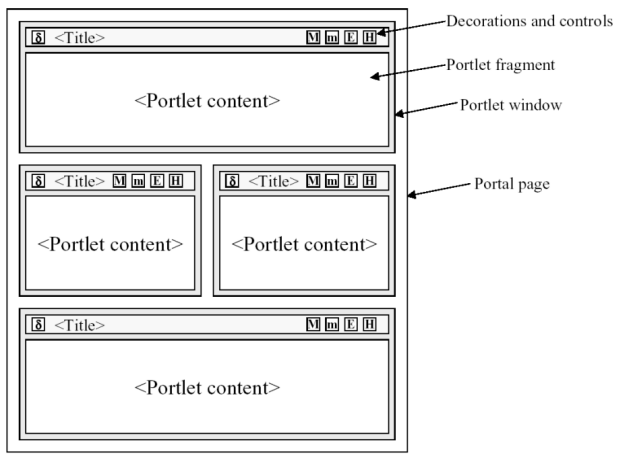The Java Community Process (JCP) uses Java Specification Requests (JSRs) to define proposed specifications and technologies designed for the Java platform.
The Portlet Specifications aim at defining portlets that can be used by any JSR-168 (Portlet 1.0) or JSR-286 (Portlet 2.0) portlet container.
Most Java EE (Enterprise Edition) portals include at least one compliant portlet container, and GateIn 3.5 is not exception. In fact, GateIn 3.5 includes a container that supports both versions.
This part gives a brief overview of the Portlet Specifications, but portlet developers are strongly encouraged to read the JSR-286 Portlet Specification.
GateIn 3.5 is fully JSR-286 compliant. Any JSR-168 or JSR-286 portlet operates as it is mandated by the respective specifications inside the portal.
A portal can be considered as a series of web pages with different areas within them. Those areas contain different windows and each window contains portlet. The diagram below visually represents this nesting:

A portlet can have different view modes. Three modes are defined by the JSR-286 specification:
- View
Generates the markup reflecting the current state of the portlet.
- Edit
Customizes the behavior of the portlet.
- Help
Provides information to the user and how to use the portlet.
Window states are indicators of how much space is consumed on any given page by a portlet. The three states defined by the JSR-168 specification are:
- Normal
A portlet shares this page with other portlets.
- Minimized
A portlet may show very little information, or none at all.
- Maximized
A portlet may be the only portlet displayed on this page.